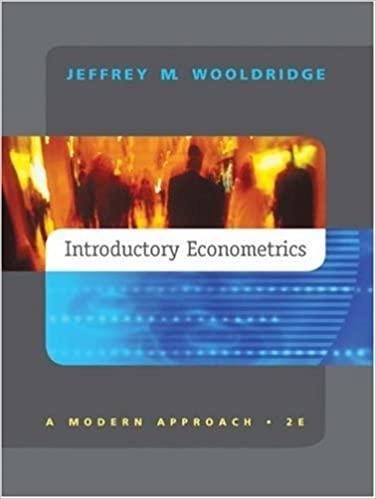Question
Question 4 Read attachments 6 to 7. Suppose market demand for and market supply of labour in Australia are: Demand = 2000 50W ; Supply
Question 4
Read attachments 6 to 7.
Suppose market demand for and market supply of labour in Australia are:
Demand = 2000 50W ; Supply = 1000 + 50W (where Demand and Supply are expressed in total hours worked, and W = hourly wage rate (dollars)). Assume the market for labour is perfectly competitive.
- (a)(1/2 mark) What would be the equilibrium hourly wage rate and quantity of labour employed in the absence of any government intervention in the market?
- (b)(1/2 mark) Suppose that the Australian government imposes a minimum wage of $15 per hour for workers. What will be the effect on the market outcome? How does this relate to the argument being made by business in Australia that is described in attachment 6?
- (c)(1/2 mark) Draw a graph to illustrate your answers to parts (a) and (b).
- (d)(1/2 mark) Explain how the effect on the quantity of labour employed due to the introduction of the minimum wage will depend on whether the own-wage elasticity of demand is elastic or inelastic. How might your answer to this question be related to the point made in attachment 7 that 'The introduction of Britain's minimum wage in 1999 had no notable impact on jobs'?
- (e)(1/2 mark) Calculate the own-wage elasticity of labour demand at the minimum wage (If you use the calculus approach consider the point where W = 15; If you use the mid-point approach consider the segment from W = 14 to W = 16).
- (f)(1 mark) Calculate (using numbers) how the introduction of the minimum wage affects:
- (i) Surplus to workers;
- (ii) Surplus to employers; and
- (iii) Total surplus.
Attachment 6
Minimum wage to rise, calls to prioritise jobs
Nick Bonyhady and Jennifer Duke
The minimum wage will rise this year by $13 a week despite calls from employer groups... Workers on the minimum wage will earn $753.80 a week...but increases will be delayed for workers in industries hardest hit by the pandemic such as tourism and entertainment. The Australian Council of Trade Unions had called for a 4 per cent rise...ACTU Secre- tary Sally McManus said she was disappointed the increase had been delayed for some workers...
Professor Mark Wooden, one of the government appointees to the independent panel that sets the minimum wage, dissented on the decision. Professor Wooden, a labour economics expert, said bleak economic circumstances should 'lead the panel to prioritise growth in jobs and hours over a wage increase'.
Peter Strong, chief executive of the Council of Small Business Organisations of Australia said the rise was not 'incredibly high' but it would hurt industry. He said businesses would now be working out how many people they could afford to employ, and whether they could afford to keep their current staff on.
Attachment 7
Trickle-up economics
The Economist; February 13 2013, p. 34
America's minimum wage has long been low by international standards, equalling just 38% of the median wage in 2011, close to the lowest in the OECD. Congress changes it only occasionally, and in the interim inflation eats away at its value. The wage was last raised, to $7.25 per hour, in 2009. Since then its real value has slipped back to where it was in 1998...
Mr Obama's proposal would boost the nominal wage to $9 per hour by 2015, restoring it, in real terms, to its 1979 level...Thereafter it would be indexed to inflation...
The proposal drew the predicted response: labour and liberal groups said it would reduce poverty and raise the spending power of the poorest workers, while businesses and Re- publicans said it would cost low-skilled workers jobs.
The economic consequences are hard to predict. Economists historically frowned on min- imum wages as distortionary price fixing that reduced demand for workers affected by the wage. But that assumption has come under fire from a growing body of research. The introduction of Britain's minimum wage in 1999 had no notable impact on jobs, for example...
Step by Step Solution
There are 3 Steps involved in it
Step: 1

Get Instant Access to Expert-Tailored Solutions
See step-by-step solutions with expert insights and AI powered tools for academic success
Step: 2

Step: 3

Ace Your Homework with AI
Get the answers you need in no time with our AI-driven, step-by-step assistance
Get Started


